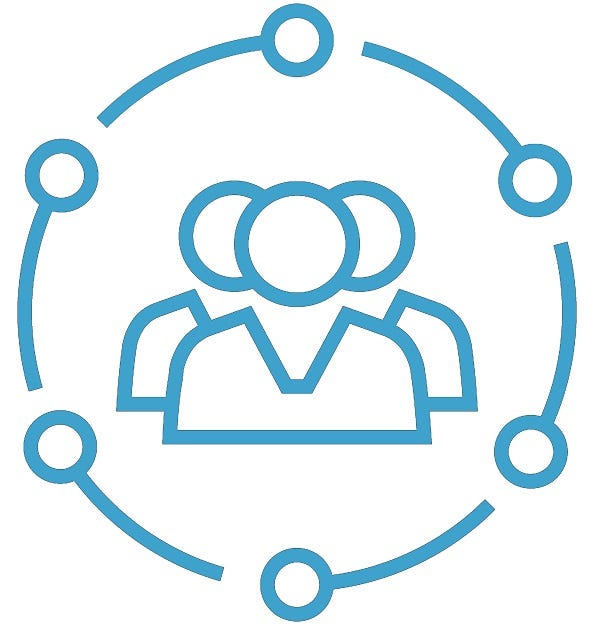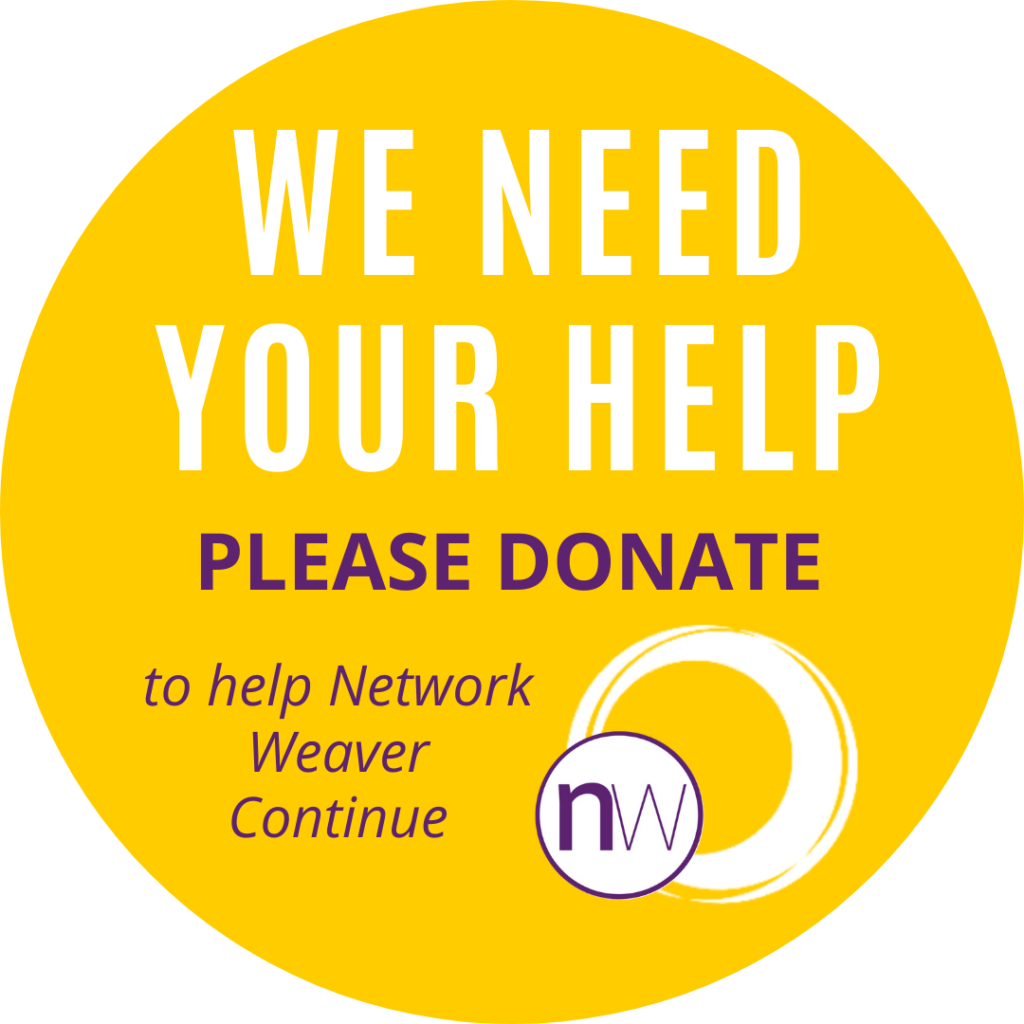The impact of the pandemic on networks: Learning from network managers’ experiences
Collective Mind hosts regular Community Conversations with our global learning community. These sessions create space for network professionals to connect, share experiences, and cultivate solutions to common problems experienced by networks. In November 2020, Collective Mind hosted a special series of our regular Community Conversations to learn from one another’s experiences of managing networks during the Covid pandemic.

The proverbial wrench that the Covid pandemic has thrown at us all cannot be understated. We’ve had to adapt our lives, work, and workplaces in unanticipated ways while long-term questions continue to linger. For networks and their staff, the impact of the pandemic has raised unique challenges for an already challenging field of practice.
Networks — a catch-all phrase for various types of collective organizing models — function by coordinating members to actively co-create value, community, and impact toward achieving a shared purpose. Behind networks that work in climate change, education, philanthropy, and everything in between, network staff work diligently in service to and in support of their members to accomplish collective goals. In the best of times, network staff wear many hats on behalf of their members: administrator, facilitator, technical expert, cheerleader, counselor, connector, coordinator, wrangler, problem-solver, communications liaison, and more. But in the midst of an enduring global pandemic, new struggles have emerged and old struggles have become amplified.
While many real and threatening struggles persist, the pandemic has also been an opportunity for networks to learn, reflect, and evolve. Eight months in, necessity has led to innovation and the initial experience of shock and uncertainty has transformed into new practices and mindsets. These lessons, insights, and tips from a diverse, global audience of network practitioners give us hope and remind us of the power of networks.
What are networks experiencing in this pandemic, and what can we learn from network managers who have weathered this year?
Building new relationships and partnerships in a pandemic can be challenging — but the pandemic is also an opportunity for more intentional collaborations. The dearth of in-person interactions has made it more difficult to create organic connections, both among network members and with potential outside partners. In-person gatherings offer us chances to meet, engage, and collaborate with colleagues and new contacts in a way that Zoom meetings struggle to recreate. Networks often rely on the spontaneous, serendipitous connections made face-to-face as both a key benefit of being part of the network and as fuel for network engagement. Without in-person spaces, building relationships has felt stilted.
At the same time, moving most of our lives online has opened doors for accessing and discovering new people and creating value together in different ways. Relying on social media and virtual outlets to connect us has become a sort of equalizer, as has the humbling experience of letting the world into our homes through a computer camera. And instead of passive exchanges with many, we’re investing our energy more selectively. As a result, network managers have been forging action-oriented connections with more tangible goals and outcomes. They’re asking important questions such as, what could be mutually beneficial about this relationship? How can we uplift each other, share platforms, and open doors together? What is worthy of everyone’s time? The result is intentional partnerships, anchored in and driven by action and shared value — much like the impetus of a network. Within networks, staff have had to make network weaving more explicit. It can take effort to create virtual collaboration spaces, manage new means of member engagement, or step in to build links and bridge connections. But creating more diverse outlets and on-ramps for connection may also have been overdue (more on this below).
Networks can struggle to stay relevant as members retreat into their own organizations — but there has also been an opportunity to engage members differently and make creative pivots to meet the new operating environment. The upheaval of the pandemic rapidly created unknowns for organizations around funding, staff, programmatic viability, and more that, for many, shifted their focus inward and away from outside commitments. Fostering a network mindset among a membership is already a constant effort but the pandemic created new uncertainties for networks about how to stay relevant to their members, how to fulfill network obligations when participation is unpredictable, and how to maintain engagement without the same ability to bring expected value and benefits to members as before. The pandemic has also affected the missions and activities of some networks, forcing a shift in priorities to meet new demands and address pandemic-related fallout.
In this new landscape, networks understand that they cannot rest on their laurels. Staying relevant and effective requires shaking up norms and embracing new possibilities. Faced with member disengagement, network staff have reimagined opportunities for new kinds of engagement. Listening to members and seeking to understand their needs has been critical for networks to adapt, be responsive, and maintain value. Where possible, staff have gone out of their way to get to know more network members personally and learn directly from them about what an updated value proposition for the network could be. While opening up new avenues for engagement, networks have also embraced the reality of what can get done and how, choosing to postpone or adjust certain network activities.
By centering members in the process of adapting, networks have identified and created paths for leaders to emerge in new ways. They’ve been able to lean into those who have stayed at the table and empower engaged members as network weavers. Leveraging expertise from across the network — like facilitating new groups or sharing skills — has generated new kinds of leadership, and tailoring content for subgroups around their specific interests has helped keep members’ attention. Network staff have had to expand their skillsets and stretch their job descriptions for the sake of stewarding the network. But embracing emergence and relying on members to help shape the network has served to reinforce the origins and intent of a collaborative networks practice.
While we lean on new technology more than ever before, no one tech platform seems to be a silver bullet (yet) — and this may be the lesson we needed all along. For many networks, virtual engagement and collaboration had begun trending long before the pandemic. For others, upgrading technology and transitioning to online platforms was not seen as a priority. Regardless of experience, the pandemic quickly required network staff to become savvy technical administrators and, most importantly, amplified the crises of tech barriers, inequality, and gaps in internet access and stability. Network memberships with older demographics, limited tech experience, and gaps in digital fluency have struggled. Across the board, the impact of relying on tech for participation and the implications for member inclusion and equitability have been significant challenges.
In truth, many of these issues were not new to the pandemic. Social and infrastructure disparities have always persisted (especially between global memberships and Western-led secretariats), and effective technology has been a moving target for years. A meaningful pivot toward embracing tech and finding solutions for inclusion has been a long time coming, and in this way, the pandemic has pushed us forward.
Networks have skilled up and committed to finding solutions to virtual connection, experimenting with a huge range of platforms. They’ve often found that using what people know wins out and that the path of least resistance cannot be underrated. Practitioners emphasize that it’s critical to know and center your audience: some memberships have the skills and bandwidth to use flashy tech platforms, while others will need to use what they know and can access, like Facebook and email. The key is to use what works for your network and build on it, and to accept the inevitability that it may take multiple platforms and channels to address different learning styles and communication preferences. While new platforms can feel annoying or daunting for members, practitioners have found that steadily integrating them as go-to resources, and even giving tutorials or extra guidance, can create new habits and foster successful adoption of new technology. And in the spirit of networks practice, many network managers have also learned to fight the urge to be a gatekeeper to virtual connections or to force uptake of new tools for online collaboration. Staff must often lay the groundwork, but networks flourish by observing and learning from members’ behaviors while allowing for emergence.
The pandemic has tested us — but it has also allowed for personal strengths to evolve and shine. Managing networks effectively involves hard and soft skills, like listening, facilitation, organization, and flexibility. The need to hold space for members during a pandemic has pushed network practitioners to flex these personal attributes, cultivate new skills, and learn about themselves in new ways. Many shared that they have learned to sit with uncertainty — to be resilient and agile, to accept that we might not know what’s going to happen next, and to embrace what comes. Centering practices such as learning, listening, and balance has become essential in work and in life. They’ve also learned to reject rigidity and perfection, and to allow for emergence within the network and in what demands and opportunities come to staff. Ultimately, network managers have been focused on relationships: investing in them, building them, stewarding them, and celebrating them. Relationships anchor networks and relationship management is a core and common skill of network managers. These network management skills are a constant practice, and in these challenging times, practitioners have certainly risen to the occasion.
Collective Mind seeks to build the efficiency, effectiveness, and impact of networks and the people who work for and with them. We believe that the way to solve the world’s most complex problems is through collective action – and that networks, in the ways that they organize people and organizations around a shared purpose, are the fit-for-purpose organizational model to harness resources, views, strengths, and assets to achieve that shared purpose.

Originally published on Medium / Collective Mind




